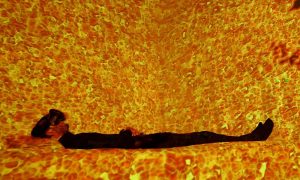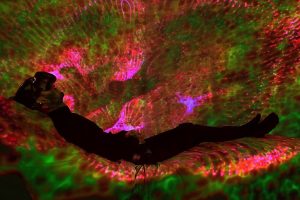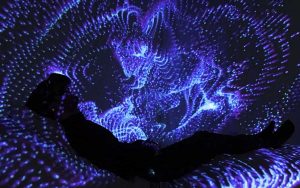
Is the secret to a good night’s sleep in a multi-sensory experience driven by VR and data visualization?
Sleep is key to a healthy lifestyle yet sadly many suffer from poor sleep and poor sleeping habits. While endless tossing and turning can result from several factors there are plenty of “sleep aids” out there aiming to remedy this issue. However, what if the answer to a good night’s sleep can be solved by using immersive technology and data?
A research study from the Royal Melbourne Institute of Technology’s (RMIT) Exertion Games Lab titled “Towards Understanding the Design of Positive Pre-sleep Through a Neurofeedback Artistic Experience,” collaborates on an immersive art project developed by PluginHUMAN. The project explores the use of virtual reality, neurofeedback, and data visualization as tools that help promote a better night’s sleep.
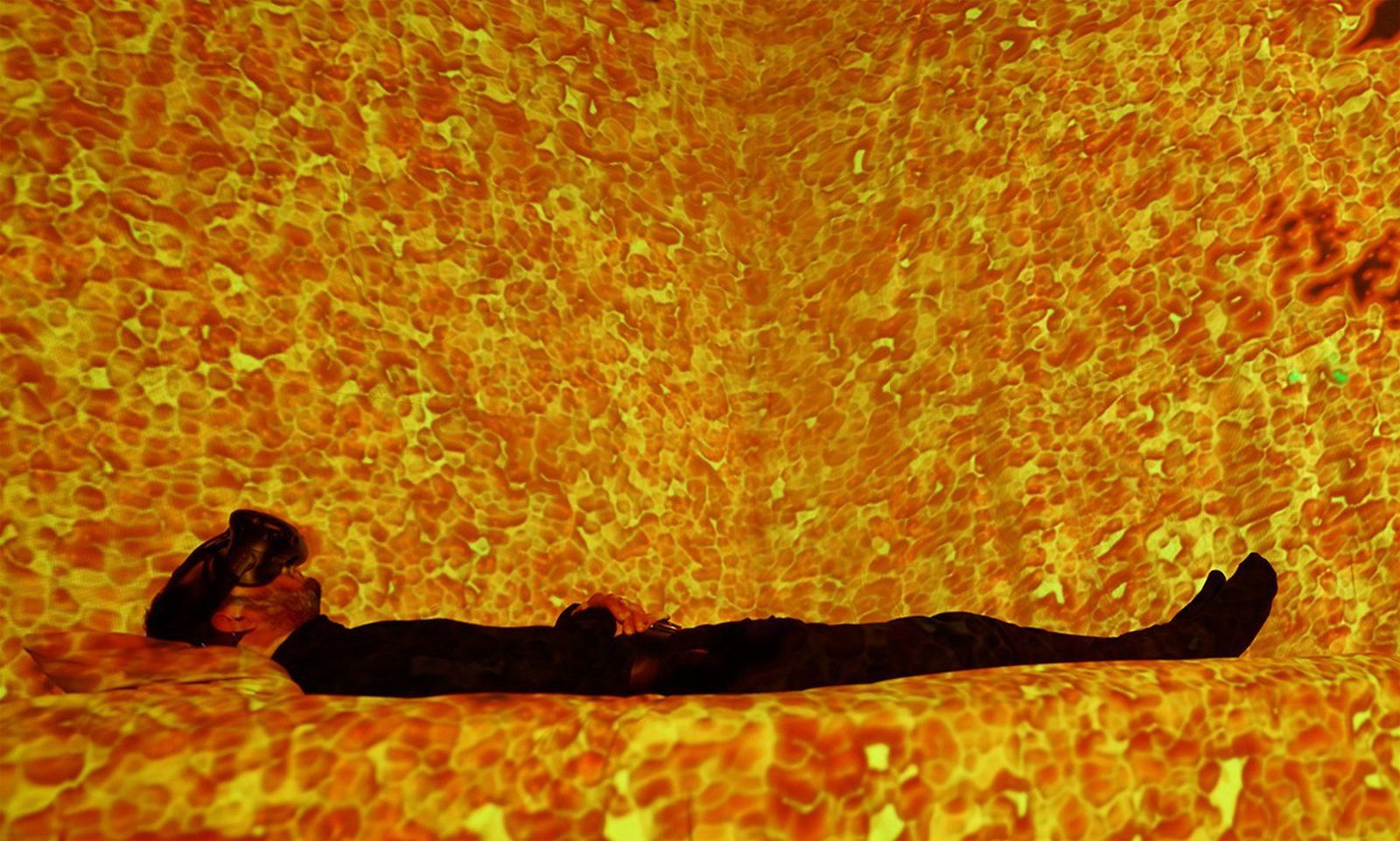
The award-winning immersive art team, PluginHUMAN, led by Dr. Betty Sargeant and Justin Dwyer developed “Inter-Dream” an immersive, virtual reality, art experience that stimulates all five senses. Together with the team from RMIT, the research project explores the benefits of using virtual reality as a catalyst to help the individual use their own neurofeedback to manipulate graphic images through EEG readings. Using psychological, physiological data, ambient music, and VR technology “Inter-Dream” their research monitored the brain waves and resting states of 12 participants. Using an EEG monitor and a VR headset each individual lay at rest wearing VR goggles. As they prepared for initial sleep cycles to begin ambient music began to play and multicolored visuals would appear. However, what makes this project and interactive technology so exciting is the psychedelic appearing visuals were controlled and by the participant through their own brain waves.
Natahan Semertzidis, a Ph.D. researcher with RMIT University’s Exertion Games Lab has shared in an interview with RMIT’s Michael Quin “Technology and sleep are always talked about as incompatible, our findings flip that notion upside down and show how technology can also aid rest and relaxation.”
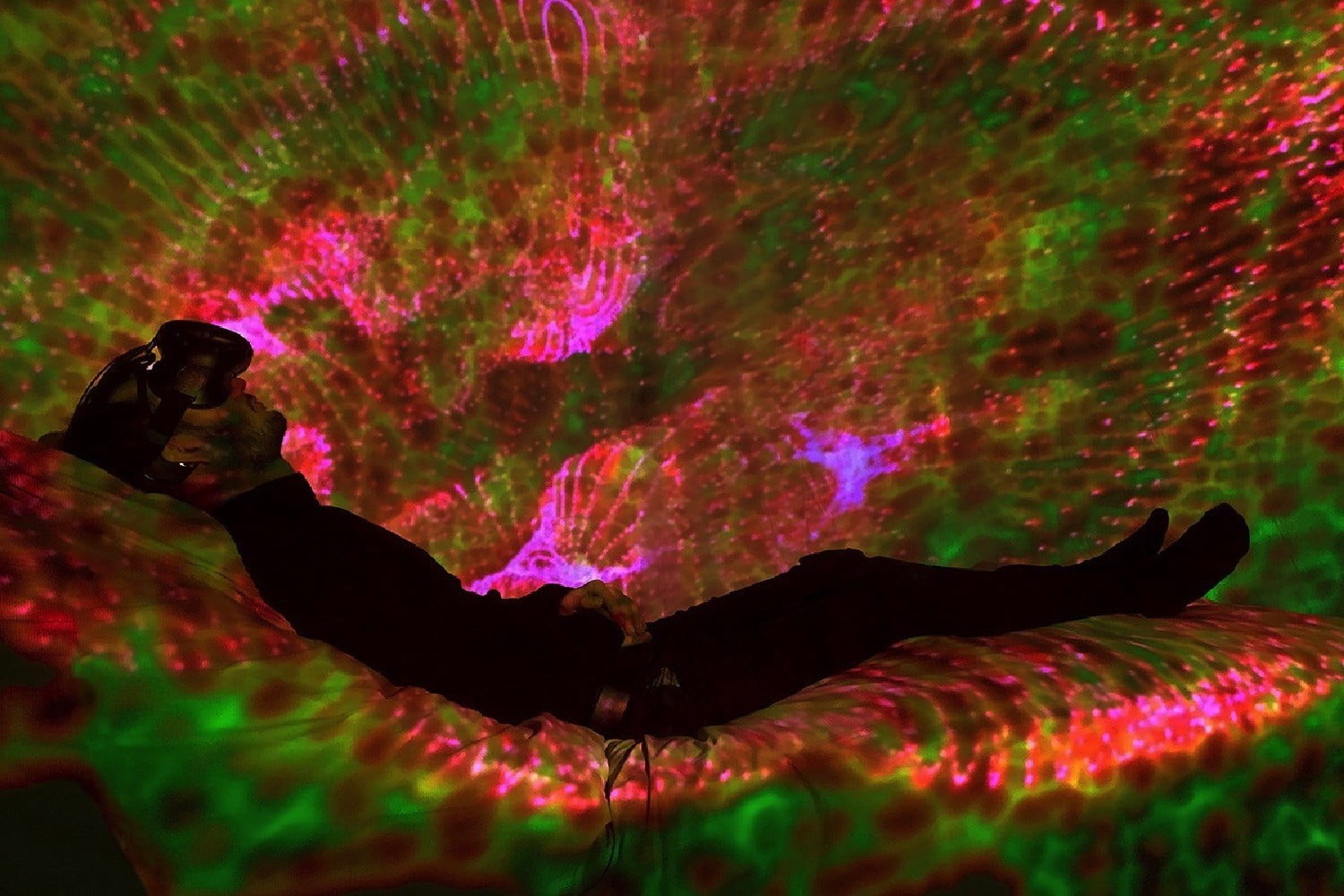
“By watching the changing EEG readings being reflected in the room where the participant laid, it was easier to identify cognitive mood states based on the kaleidoscope colors being emitted. “Good sleepers are generally more relaxed and positive, while bad sleepers are more likely to focus on unpleasant and intrusive worries and stressors because of involuntary mental rehearsal of the past day’s events,” he shared.
”Technology and sleep are always talked about as incompatible, our findings flip that notion upside down and show how technology can also aid rest and relaxation.” – Natahan Semertzidis (PhD researcher with RMIT University’s Exertion Games Lab)
Within their paper, the research team uncovers helpful information that can help identify and expand on new possibilities relating to sleep research and the use of immersive technology like the “Inter-Dream” system. Professor Florian ‘Floyd’ Mueller, Semertzidis’ co-supervisor and head of the University’s Exertion Games Lab shared in a statement, “The work really puts the human body centre stage, allowing us to see the human body not just as a mere input controller, but rather allowing people to experience their bodies as play. For me, this is a beginning to facilitate a more playful future, in particular, one where we can even experience rest and ultimately sleep as a form of (digital) play: it would be fascinating to explore what such a future could look like and we are always looking for Ph.D. candidates who want to explore this.”

Project Research and Design Team
Exertion Games Lab/RMIT University Research Team: Nathan Semertzidis (Lead Researcher), Betty Sargeant, Justin Dwyer, Fabio Zambetta, and Florian ‘Floyd’ Mueller(co-supervisor and head of the University’s Exertion Games Lab)
PluginHUMAN: creators-in-residence at the RMIT University’s Exertion Games Lab.
*To read the full research paper click here.


